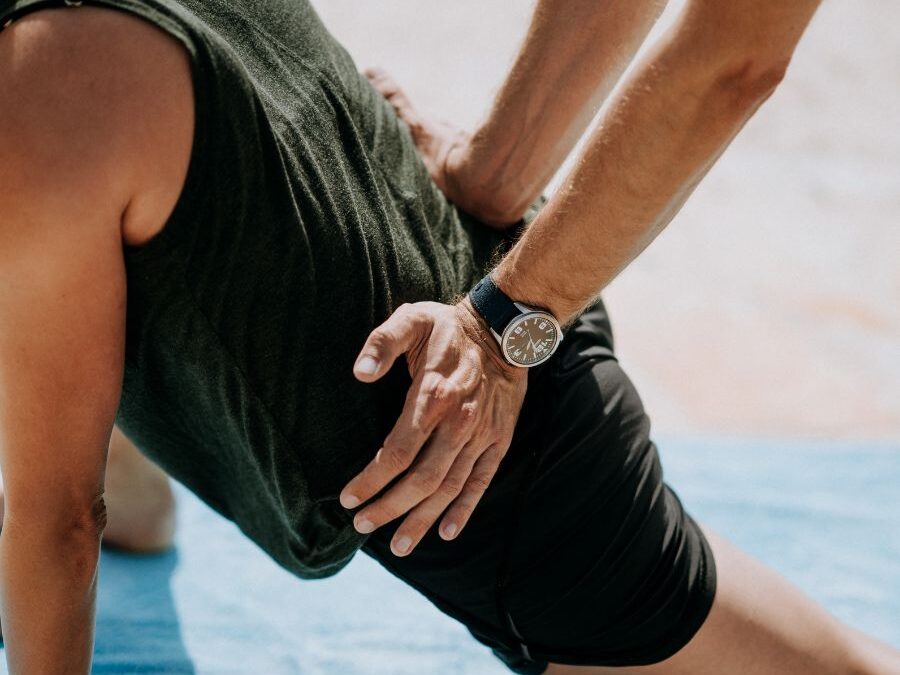As an athlete, you know how important it is to care for your body. Unfortunately, injuries are a common occurrence in sports, and they can impact your performance and overall health. If you’re looking for natural and effective ways to manage sports injuries, chiropractic care is something you should consider. This post examines the most common types and causes of sports injuries and how chiropractic care can help athletes recover faster and prevent future injuries. We’ll also explore the benefits of chiropractic treatment for athletes and different approaches to treating sports injuries with chiropractic techniques. So, whether you’re dealing with a sprain, strain, or more severe injury, read on to learn how chiropractic care can help you get back to peak performance.
Thank you for reading this post, don't forget to subscribe!
Common Sports Injuries in Athletes: An Overview of the Types and Causes
Sports injuries are common among athletes, ranging from amateurs to professionals. These injuries can significantly impact an athlete’s performance, training, and overall well-being. Here’s an overview of some common sports injuries, including their types and causes:
- Sprains and Strains: Sprains occur when ligaments connect bones at a joint and are stretched or torn. Strains, on the other hand, involve stretching or tearing of muscles or tendons. These injuries often happen due to sudden movements, overextension, or excessive force applied to the joint or muscle.
- Fractures: Fractures refer to broken bones, which can occur in various sports due to direct trauma, falls, or repetitive stress. Stress fractures, a type of fracture caused by repetitive force, are common in sports that involve running and jumping.
- Dislocations: Dislocations happen when the bones at a joint are forced out of their normal positions. They are usually caused by sudden impact or an abnormal twisting motion. Dislocated shoulders and fingers are commonly seen in sports like football, basketball, and rugby.
- Tendinitis: Tendinitis is the inflammation or irritation of a tendon, which connects muscles to bones. It is often caused by overuse or repetitive motions, such as throwing, jumping, or running. Tennis elbow and Achilles tendinitis are examples of common tendinitis injuries.
- Concussions: Concussions are traumatic brain injuries resulting from a blow to the head or a sudden jolt to the body, causing the brain to move rapidly within the skull. They are commonly associated with contact sports like football, hockey, and boxing.
- Knee Injuries: Knee injuries, such as anterior cruciate ligament (ACL) tears, meniscus tears, and patellofemoral pain syndrome, are prevalent in sports that involve jumping, cutting, or pivoting movements. These injuries can be caused by sudden stops or changes in direction, direct impact, or overuse.
- Shin Splints: Shin splints refer to pain and inflammation in the shinbone (tibia) and surrounding tissues. They are commonly seen in athletes who engage in running or jumping activities, particularly on hard surfaces. Overtraining, improper footwear, and flat feet can contribute to shin splints.
- Muscle Cramps: Muscle cramps are involuntary contractions of muscles, often caused by dehydration, electrolyte imbalances, fatigue, or inadequate warm-up. They can occur in any sport and are more common during intense exercise or in hot environments.

Understanding Chiropractic Care for Sports Injuries
Chiropractic care can benefit sports injuries in terms of treatment and prevention. Chiropractors are healthcare professionals who specialize in diagnosing and treating musculoskeletal disorders, including sports-related injuries. They primarily focus on the spine, joints, and the nervous system. Here are some key aspects of chiropractic care for sports injuries:
Evaluation and Diagnosis
Chiropractors perform a thorough evaluation to assess the extent of the injury and identify the underlying causes. They may examine your range of motion, perform orthopedic tests, and review your medical history to understand the nature of the injury.
Spinal and Joint Manipulation
Chiropractors use spinal manipulation techniques, called adjustments, to reduce pain and restore joint function. They aim to improve mobility, reduce inflammation, and promote healing by applying force to the affected joints.
Soft Tissue Therapy
Chiropractors may employ various soft tissue therapies, such as massage, myofascial release, and stretching exercises. These techniques help to relax muscles, reduce tension, improve flexibility, and enhance blood circulation.
Rehabilitation Exercises
Chiropractors often prescribe specific exercises and rehabilitation programs tailored to the individual’s injury and sport. These exercises can help strengthen weak muscles, improve balance, enhance coordination, and restore overall function.
Injury Prevention
Chiropractors treat and prevent sports injuries by advising on proper body mechanics, ergonomics, and techniques for physical activity. They can also recommend exercises to improve flexibility and strength, reducing the risk of future injuries.
Collaborative Approach
Chiropractors work with sports medicine physicians and physical therapists to provide comprehensive care. They refer patients to other specialists when necessary, ensuring a multidisciplinary approach to treatment.

Benefits of Chiropractic Treatment for Athletes
Chiropractic treatment can offer several benefits to athletes by addressing musculoskeletal issues, improving performance, and supporting overall wellness. Here are some of the key benefits of chiropractic treatment for athletes:
Injury Prevention
Chiropractors can identify and address musculoskeletal imbalances, misalignments, and areas of weakness in athletes. This care can prevent injuries and improve athletic performance.
Pain Management
Chiropractic adjustments and manual therapies can relieve athletes who experience back, neck, or joint pain. These treatments help reduce inflammation, improve joint mobility, and ease muscle tension.
Enhanced Performance
Chiropractic treatment improves the nervous and musculoskeletal systems to enhance athletic performance. Athletes experience improved balance, coordination, strength, and range of motion with better spinal alignment, joint mobility, and overall biomechanics.
Faster Recovery
Chiropractors use soft tissue therapies, spinal adjustments, and rehabilitation exercises to speed up injury recovery. These techniques reduce healing time, minimize scar tissue formation and restore optimal function to injured areas.
Non-Invasive Approach
Chiropractic care typically emphasizes a drug-free and non-invasive approach to managing injuries and enhancing performance. This can particularly appeal to athletes who prefer natural and conservative treatment methods.
Holistic Approach
Chiropractors consider the interconnections between the spine, nervous system, and overall health. They may recommend lifestyle changes to athletes to support optimal wellness and performance.
Individualized Treatment
Chiropractic care is personalized to each athlete’s needs, including sport, training, injury history, and goals. This approach ensures targeted care for their specific requirements.
Collaboration with Other Healthcare Professionals
Chiropractors work with healthcare professionals such as sports medicine physicians, physical therapists, and strength and conditioning specialists to provide comprehensive care for athletes, addressing various aspects of their health and performance.
Chiropractic Approaches to Common Sports Injuries
Chiropractic care can be a valuable approach to managing common sports injuries. Chiropractors use various techniques to address pain, restore function, and promote overall wellness. Here are some chiropractic approaches commonly used for common sports injuries:
- Spinal adjustments: Chiropractors are experts in spinal adjustments that use controlled force to realign joints, reduce pain, and improve joint function. These techniques can benefit sports injuries caused by impacts or repetitive motions such as strains, sprains, and spinal misalignments.
- Soft tissue therapies: Chiropractors use myofascial release, massage therapy, and instrument-assisted soft tissue mobilization (IASTM) to heal sports injuries. These techniques reduce muscle tension, break up scar tissue, and improve blood circulation for faster healing.
- Rehabilitation exercises: Chiropractors suggest exercises and stretches to aid in sports injury recovery. These exercises target the injured area and surrounding muscles, improving strength, flexibility, balance, and coordination. Rehabilitative exercises help prevent future injuries.
- Kinesiology taping: Kinesiology tape can help chiropractors support injured muscles, joints, and ligaments while allowing a full range of motion. It can enhance proprioception, relieve pain, and reduce swelling related to sports injuries.
- Joint mobilization: Chiropractors can restore joint function and reduce pain with joint mobilization techniques. These involve gently moving the affected joint to improve flexibility and reduce stiffness.
- Injury prevention strategies: Chiropractors prioritize injury prevention for athletes by offering guidance on warm-up exercises, stretching techniques, ergonomic advice, and biomechanical corrections to minimize future injury risks.
Integrating Chiropractic Care into Sports Injury Rehabilitation Programs
Integrating chiropractic care into sports injury rehabilitation programs can benefit athletes. Chiropractors are trained professionals who specialize in the musculoskeletal system, focusing on the alignment and function of the spine. By incorporating chiropractic techniques such as spinal adjustments, soft tissue therapy, and rehabilitative exercises, athletes can experience improved recovery, enhanced performance, and reduced risk of future injuries. Chiropractic care aims to restore proper alignment and mobility, alleviate pain and inflammation, and promote overall physical well-being. By addressing the underlying biomechanical imbalances and imbalances in the body, chiropractors can help athletes regain strength, flexibility, and stability, allowing them to return to their sport confidently. This holistic approach to sports injury rehabilitation can complement other treatment modalities, such as physical therapy and sports medicine, providing a comprehensive and individualized approach to optimize athletes’ recovery and performance.
Conclusion
In conclusion, chiropractic care is an effective and drug-free approach to managing sports injuries. It helps alleviate pain, promotes healing, and prevents future injuries. With a thorough understanding of the types and causes of sports injuries, chiropractors can provide customized treatment plans that address the specific needs of each athlete. Integrating chiropractic care into your sports injury rehabilitation program can help you recover faster, perform better, and stay injury-free. If you’re an athlete struggling with a sports injury or want to prevent one, consult our experts at Integrative Chiropractic to learn more about how chiropractic care can benefit you.


Recent Comments